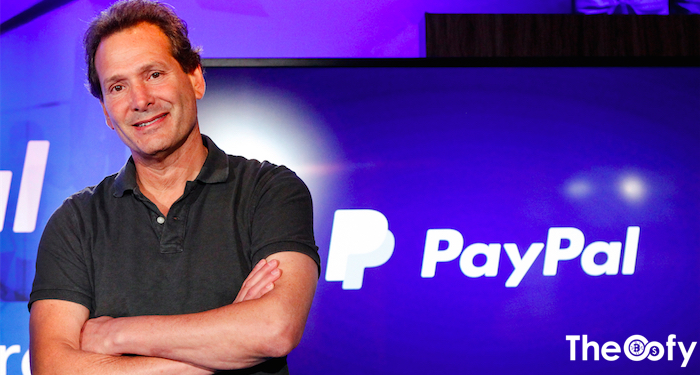The recent services are developed for the customers who don’t have classical bank account.
PayPal is trying to spread out something closer to a real bank, as reported by The Wall Street Journal.
It is starting to present more classical banking services to clients, along with ATM-adaptable debit cards, direct depositing paychecks, and FDIC insurance.
This development that PayPal will do is so attractive because it doesn’t get a banking license in the US. As reported by The Wall Street Journal, the firm is trying to find a legal way by cooperating with some small banks that can arrange those services.
Table of Contents
Behind the visible aspects
So behind the visible aspects, it is not PayPal providing these services, but a Delaware bank deal with debit cards, a bank in Georgia deposits checks that users take advantages of, and banks in Utah provide loans to clients and small businesses.
Thus far, PayPal has only been presenting the properties to a small group of clients.
There will not be monthly fee or minimum balance to use the services, but users will have to make payment for ATM fees for using machines not in PayPal’s network and pay 1 percent of any check they deposit over the android camera system.

The firm isn’t going to compansate classical banks anytime soon
As stated by Bill Ready, PayPal’s COO, the firm isn’t going to compansate classical banks anytime soon with the new service.
Alternately, it would like to offer banking choices to clients that typically haven’t been able to take advantage of them (something the firm views as progressively essential in today’s digital economy).
“For folks who don’t have bank accounts,” he said, “for folks who don’t have credit and debit cards, we want to give them something so they’re not turning to prepaid cards, check cashiers and payday lenders.”
News Analysis: Is Banking’s PayPal Nightmare A Customer’s Dream?
By Adriaan van Zyl, Forbes: Digital Banking and FinTech expert. Entrepreneur, advisor and former bank executive.
Forget Amazon, Facebook, Apple and Google. If PayPal decided to become a U.S. bank, it could be the biggest disruption in modern U.S. banking history. Given its extensive customer reach, both direct and indirect, it’s not hard to imagine the company completely dominating retail banking in the country. PayPal already owns a bank in Europe that’s based in Luxembourg.
I don’t believe that there is a bank in the U.S. with more reach than PayPal. This is evident based on some key statistics, which show that the company has 210 million customers and 17 million merchants. Granted, some of these could be located overseas, but even if you conservatively halve these numbers to account for that, the totals are still astonishing. You don’t have to be a customer to contribute to PayPal revenue either, as its merchant payments division Braintree holds 520 million cards on file. For example, chances are that if you use Uber, Netflix, Pinterest, Airbnb or some commerce applications in Facebook Messenger, you provide income to PayPal.
The Big Four generally have too many non-permissible activities to become bank holding companies without having to shed significant business interests due to strict U.S. banking regulations. Yes, they can nibble away strongly at American banks’ payments business and loans, but without a banking charter, the Big Four will never be able to effectively raise low-cost deposits or tap Fed funding programs. That leaves PayPal, focused mainly on financial services, as the biggest non-bank competitive threat to U.S. banks. The breadth of PayPal’s product range for retail customers already matches or exceeds what most small banks can offer. Should community banks be scared, with retail customers being their bread and butter? Right now, most PayPal products are offered through partnerships with U.S. banks, but they could easily be pulled into PayPal’s own bank.
Let’s look at some of what PayPal already offers to consumers. First, there is the standard PayPal account where you can accumulate a balance (like a deposit account), add payment cards, and pay or receive money from friends (even internationally). PayPal also offers a prepaid debit card and a savings account. Then there is PayPal Credit, which is a reusable credit line available at the checkout section of online stores. PayPal also offers a credit card, a mobile wallet, Xoom and Venmo.
If the company converted every PayPal account into a consumer checking account and marketed it as such (which it could do as a bank), it would take business away from every single bank in this country. It is a very compelling value proposition for consumers. Many consumers would favor their PayPal checking account over their existing bank checking account given the former’s person-to-person payments integration (directly and via Venmo) and ability to conduct foreign transfers (directly and via Xoom). Where else could you transfer $100 to a family member on a different continent, paying just pennies versus upward of $35 at banks? Does any bank provide the ability to pay millions of merchants with free purchase protection? You could argue that PayPal doesn’t offer mortgage and auto loans, but it could easily add such features. With such a huge customer base to cross-sell to, scale would be reached quickly.
Then there are PayPal’s small business offerings, traditionally the domain of community banks. It has a business debit card and offers business loans. Merchants have the option of using PayPal merchant services to process all manner of payments such as Android Pay, Apple Pay, credit cards and debit cards. PayPal takes all of this one step further, providing credit to the customers of its customers (PayPal credit to the customers of PayPal merchants at checkout). Then there is PayPal Here, a mobile payment system (a small card reader that plugs into a smartphone). Therefore, in addition to attracting deposits and making loans, PayPal earns good fee income through payments fees. Fee income is a key component for a bank to have a competitive return on equity, and it’s an area where most smaller banks are struggling.
It is hard to ignore the strong and valued personal relationships at community banks. But more and more customers prefer the ease of use of digital products and the integrated product range that an organization like PayPal can offer. However, it’s not all lost for the smaller banks. As usual, there is always a silver lining (or two). First, the relative cost of digital banking technology is reducing, and community banks are in the unique position to offer the best of both worlds. If combined through blending “real people” service with technology, community banks can compete against growing threats like PayPal (as well as the mega-banks).
Secondly, there is strong momentum with application programming interfaces (APIs). By adopting an API approach, a smaller bank can partner with various specialist financial services providers and potentially offer the combined products and services that PayPal offers. For instance, it is unlikely that a bank without scale can bring its international transfer cost down to the level where it can compete with Xoom. Right now, said bank’s customer may go to Xoom for international transfers only. However, that might change in the future as PayPal offers more and more products and features. The community bank may eventually lose the customer. It could be prevented, however, by plugging in the desired service (Xoom or a similar service provider) via an API into the bank’s own digital banking portal.
PayPal and many other forces are looming as a threat to the traditional banking model and industry. Yet there are survival options for smaller and mid-size banks that are willing to adapt, which makes you wonder: What are they waiting for? Time is not on their side, and the PayPal threat will not go away.




